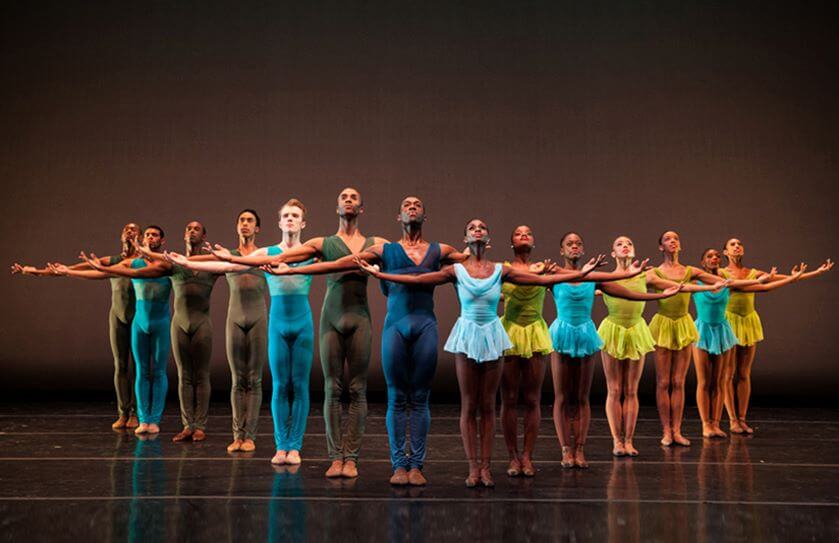This past Saturday night, I had the pleasure of seeing theВ Dance Theatre of Harlem. Their five-night run at Jazz at Lincoln Center marked the end of a nine-year, financially driven hiatus for the company, and I was super-excited to see one of their first NYC performances.
Saturday’s program could best be described as “lovely”—a real joy to watch. It opened withВ “Gloria,” a gorgeous new work by resident choreographer Robert Garland. It was one of the most inspiring pieces I’ve seen in a while—one that I would love to dance, if I were so talented! The movement was deeply classical with refreshing contemporary elements woven throughout. During the piece, the mood shifted between melancholy and and joyous, as dancers effortlessly wove among each other, partnered up and separated. At the start and end of the piece, ballerinas-in-training, from the Dance Theatre of Harlem school, joined their more seasoned counterparts onstage—an apt metaphor for the company’s new beginning.
The next piece, Helen Pickett’s “When Love,” was a moving, athletic duet featuring Jehbreal Jackson and the ultra-talented Ashley Murphy. (My apologies to Jackson—I kept finding my eyes drawn to Murphy!) Set to Philip Glass’ stirring “Einstein on the Beach,” the piece depicted all the wild emotions that you experience in love. I especially appreciated how well the dancers conveyed the feeling that the two of you exist separately, in a world apart from everyone else.
Balanchine’s playful “Glinka Pas de Trois” followed (also featuring Murphy), then Ailey’s “The Lark Ascending” (pretty, but it felt less tight than the previous three works). The last piece of the evening, Donald Byrd’s “Contested Space,” was my least favorite. After the moving, uplifting dances that preceded, this felt like a misfit. “Contested Space” is set to a jarring, techno score and features flashy, ultra-contemporary ballet moves—overwrought developpes and the like—the type that you might see in So You Think You Can Dance. This was not a good thing. And I’m saying that as a diehardВ SYTYCDВ fan!
I’m hoping Dance Theatre of Harlem is back for good—not just because I really enjoyed the Saturday program. I also fully support what the company stands for.
Dance Theatre of Harlem was founded in 1969 by Arthur Mitchell, the firstВ African-American principal dancer of New York City Ballet. (He’s probably best known for his В role in Agon‘s pas de deux, which Balanchine famously choreographed for him—ground-breaking, at the time, because it paired him, a black man, with a white woman.) Dance Theatre of Harlem’s mission has always been, in part, to break boundaries and prove that black dancers can perform classical ballet at the highest caliber.
Today, it’s no secret that the ballet world is still not the most diverse. In most of the classical ballet performances I’ve seen, there have been very few—or, often, no—dancers of color. And in comparison to the very diverse world I’m used to seeing every day in NYC, I can’t help but notice that. (That’s also one of the reasons that led me to take ballet at Ailey—I wanted to be surrounded by a diverse group of dancers.)
And that’s why I’m hoping Dance Theatre of Harlem will be around for many years. I’m hoping this diverse, talented company will inspire everyone who has the drive to pursue ballet to do so, no matter what their backgrounds.
(Photo of “Gloria” via the Dance Theatre of Harlem’s Facebook page)
